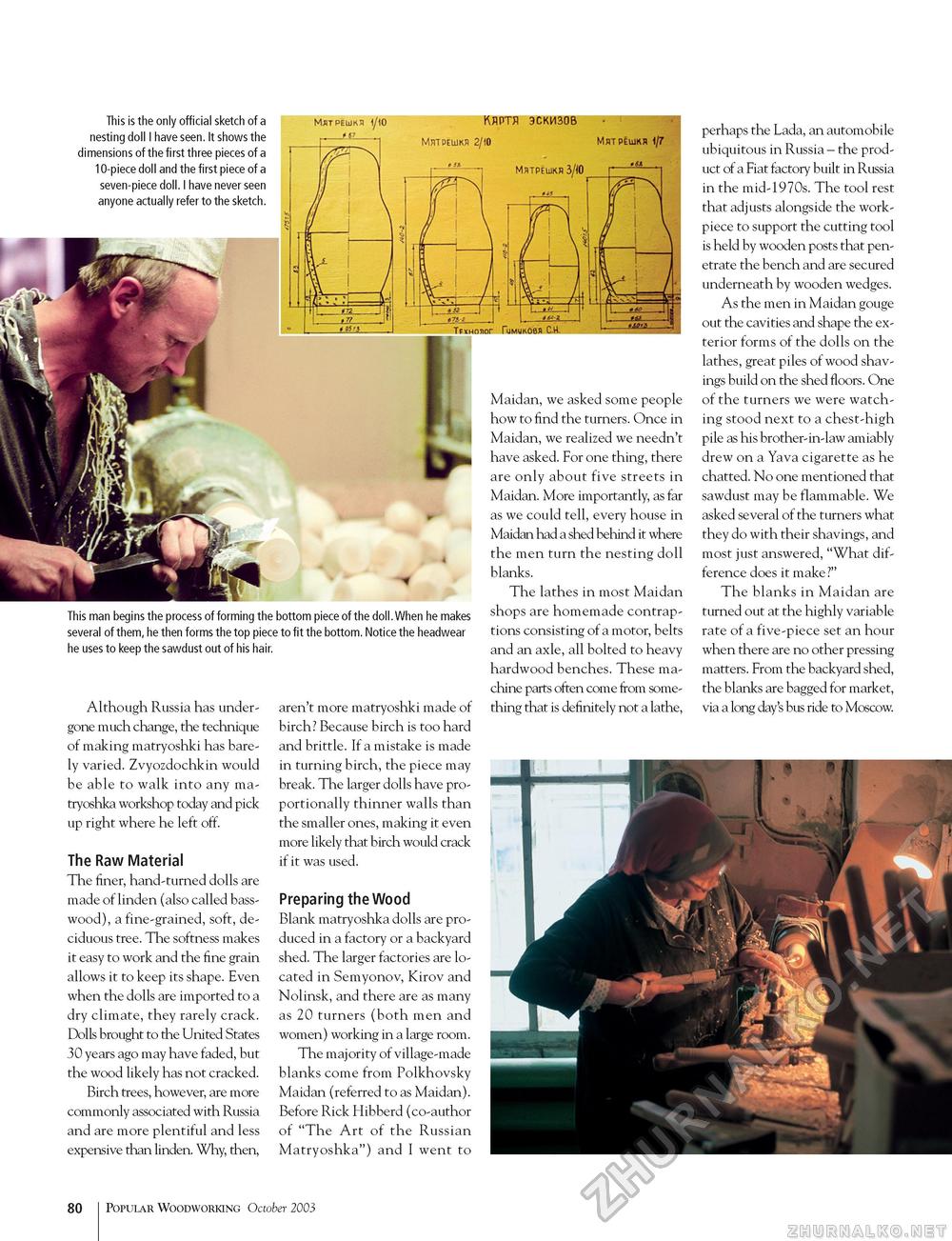Popular Woodworking 2003-10 № 136, страница 80
This is the only official sketch of a nesting doll I have seen. It shows the dimensions of the first three pieces of a 10-piece doll and the first piece of a seven-piece doll. I have never seen anyone actually refer to the sketch. This man begins the process of forming the bottom piece of the doll. When he makes several of them, he then forms the top piece to fit the bottom. Notice the headwear he uses to keep the sawdust out of his hair. Although Russia has undergone much change, the technique of making matryoshki has barely varied. Zvyozdochkin would be able to walk into any ma-tryoshka workshop today and pick up right where he left off. The Raw Material The finer, hand-turned dolls are made of linden (also called bass-wood), a fine-grained, soft, deciduous tree. The softness makes it easy to work and the fine grain allows it to keep its shape. Even when the dolls are imported to a dry climate, they rarely crack. Dolls brought to the United States 30 years ago may have faded, but the wood likely has not cracked. Birch trees, however, are more commonly associated with Russia and are more plentiful and less expensive than linden. Why, then, aren't more matryoshki made of birch? Because birch is too hard and brittle. If a mistake is made in turning birch, the piece may break. The larger dolls have proportionally thinner walls than the smaller ones, making it even more likely that birch would crack if it was used. Preparing the Wood Blank matryoshka dolls are produced in a factory or a backyard shed. The larger factories are located in Semyonov, Kirov and Nolinsk, and there are as many as 20 turners (both men and women) working in a large room. The majority of village-made blanks come from Polkhovsky Maidan (referred to as Maidan). Before Rick Hibberd (co-author of "The Art of the Russian Matryoshka") and I went to Maidan, we asked some people how to find the turners. Once in Maidan, we realized we needn't have asked. For one thing, there are only about five streets in Maidan. More importantly, as far as we could tell, every house in Maidan had a shed behind it where the men turn the nesting doll blanks. The lathes in most Maidan shops are homemade contraptions consisting of a motor, belts and an axle, all bolted to heavy hardwood benches. These machine parts often come from something that is definitely not a lathe, perhaps the Lada, an automobile ubiquitous in Russia - the product of a Fiat factory built in Russia in the mid-1970s. The tool rest that adjusts alongside the work-piece to support the cutting tool is held by wooden posts that penetrate the bench and are secured underneath by wooden wedges. As the men in Maidan gouge out the cavities and shape the exterior forms of the dolls on the lathes, great piles of wood shavings build on the shed floors. One of the turners we were watching stood next to a chest-high pile as his brother-in-law amiably drew on a Yava cigarette as he chatted. No one mentioned that sawdust may be flammable. We asked several of the turners what they do with their shavings, and most just answered, "What difference does it make?" The blanks in Maidan are turned out at the highly variable rate of a five-piece set an hour when there are no other pressing matters. From the backyard shed, the blanks are bagged for market, via a long day's bus ride to Moscow. 80 Popular Woodworking October 2003 |








